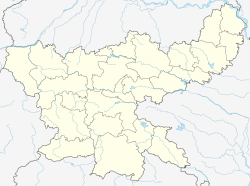Haidernagar Harinagar(हरि नगर) | |
|---|---|
Block | |
| Coordinates: 24°30′26″N83°52′02″E / 24.5071762°N 83.8672042°E | |
| Country | |
| State | Jharkhand |
| District | Palamu |
| Block | Haidernagar |
| Government | |
| • MLA | Kamlesh Kumar Singh, NCP candidate |
| Population (2001) | |
• Total | 146,139 |
| Languages | |
| • Official | Magahi, Hindi |
| Time zone | UTC+5:30 (IST) |
| PIN | 822115 |
| Vehicle registration | JH 03 |
| Website | palamu |
Haidernagar, informally known as Babhandih, [1] is one of the administrative blocks of Palamu district, Jharkhand state, India.

